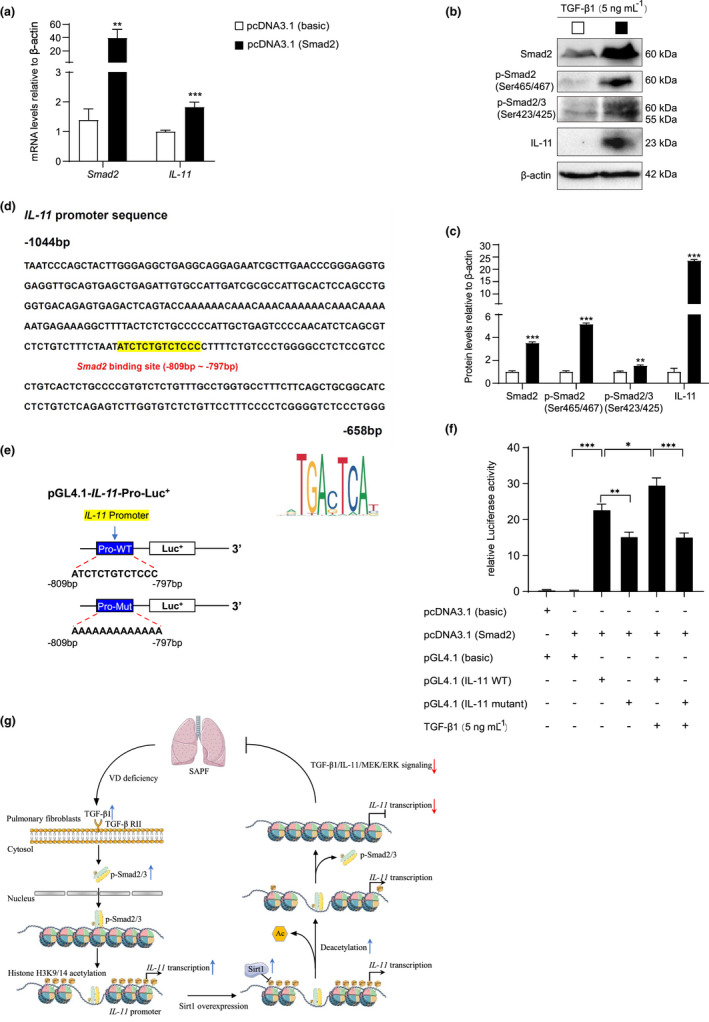FIGURE 6.

Smad2 regulates IL‐11 expression at the transcriptional level. MRC‐5 cells were transfected with Smad2 and vehicle (basic) overexpression plasmid. (a) Smad2 and IL‐11 mRNA levels in MRC‐5 cells by real‐time RT‐PCR, calculated as ratio to β‐actin mRNA and expressed relative to control. (b) Western blotting of MRC‐5 extracts showing Smad2, p‐Smad2(Ser465/467), p‐Smad2/3(Ser423/425), and IL‐11; β‐actin was the loading control. (c) Protein levels relative to β‐actin were assessed by densitometric analysis. Values are means ± SEM of six determinations. **p < 0.01, ***p < 0.001 compared with control group. (d) Smad2‐like sequence binding site (highlighted with yellow) in IL‐11 promoter region and the Smad2 sequence highlighted in red color. (e) Structure schematic diagram of pGL4.1‐IL‐11 promoter reporter plasmid and mutant pGL4.1‐IL‐11 promoter reporter plasmid. (f) IL‐11 promoter activity was measured by a luciferase reporter gene assay. Six biological replicates were used per experiment. Values are means ± SEM of six determinations. *p < 0.05, **p < 0.01, ***p < 0.001 compared with the corresponding group. (g) TGF‐β1 level increased in the progress of SAPF caused by VD deficiency, leading to activation of Smad2 and formation of p‐Smad2/3(Ser423/425) complex, which then bound to the promoter region and increased acetylation levels of H3K9/14. Ultimately, IL‐11 transcription level was upregulated, activating MEK/ERK signaling, which finally caused SAPF. Sirt1 overexpression ameliorated SAPF in VD‐deficient mice through downregulating IL‐11 transcribed by Smad2 via deacetylating H3K9/14ac, and subsequently inhibiting TIME signals in pulmonary fibroblasts
